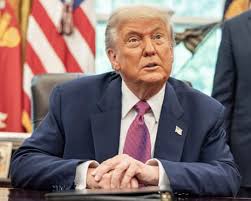Understanding Trump Tariffs: Impacts and Current Developments

Introduction to Trump Tariffs
The tariffs imposed under former President Donald Trump during his administration have left a substantial impact on international trade dynamics. Implemented primarily in 2018, these tariffs were primarily aimed at China and were aimed at protecting American industries from unfair competition. Understanding their evolution and effects is crucial for grasping current economic trends and trade policies.
Major Developments and Current Effects
Since taking office in 2016, Trump has been vocal about the need to address what he characterized as an unfair trade imbalance with countries like China. TheTrump tariffs included a range of taxes on imports, most notably 25% on steel and 10% on aluminum from various countries, which initiated a tit-for-tat response resulting in retaliatory tariffs from affected nations.
As of late 2023, while the Biden administration has not fully removed these tariffs, they are currently under review amid rising inflation and pressures on supply chains exacerbated by the COVID-19 pandemic.
Analysts indicate a mixed economic impact. Some American manufacturers have benefited from the reduced foreign competition, while consumers are facing higher prices for a wide array of goods. According to the U.S. Chamber of Commerce, American companies have reported a 1.5% increase in raw material costs since the tariffs were enacted.
Geopolitical Ramifications
The tariffs have also affected international relations. For instance, relations between the U.S. and China have deteriorated further, leading to concerns about long-term economic stability and bilateral trade agreements. The European Union and Canada have expressed discontent, advocating for a multilateral approach to trade regulation rather than unilateral tariff measures. In September 2023, Canada called for the reinstatement of tariff-free access for Canadian aluminum and steel to prevent ongoing strain between these trade partners.
Conclusion and Future Outlook
Trump tariffs continue to shape the global economic landscape. While some sectors have experienced temporary boosts, the overall cost to consumers and businesses remains a pressing issue. As the current administration evaluates these tariffs, industry leaders and policymakers must weigh the necessity for protectionist measures against the broader implications on American competitiveness and international cooperation.
Looking ahead, a significant reassessment of these tariffs could emerge if inflation continues to strain the economy. Ongoing discussions among trade representatives will play a vital role in shaping future trade policies in the U.S. as they attempt to balance domestic interests with global economic partnerships.









